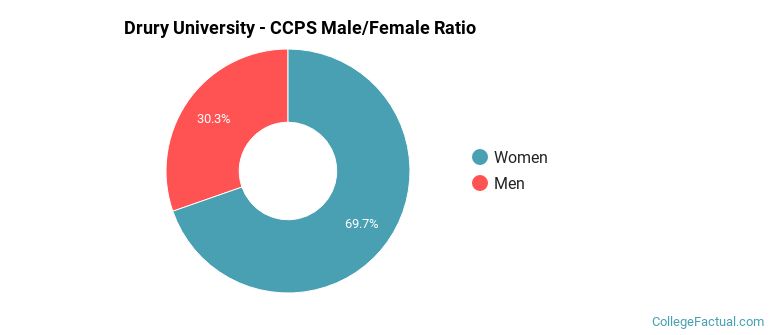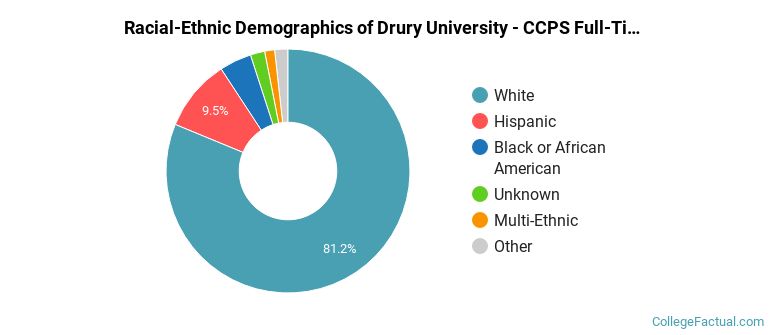 by our College Data Analytics Team
by our College Data Analytics TeamDrury University - CCPS total enrollment is approximately 1,020 students.
Male/Female Breakdown of Undergraduates
The full-time Drury University - CCPS undergraduate population is made up of 67% women, and 33% men.

For the gender breakdown for all students, go here.
Drury University - CCPS Racial/Ethnic Breakdown of Undergraduates

| Race/Ethnicity | Number |
|---|---|
| White | 448 |
| Hispanic | 51 |
| Unknown | 26 |
| Multi-Ethnic | 16 |
| Black or African American | 14 |
| Asian | 6 |
| Native Hawaiian or Pacific Islander | 4 |
| International | 0 |
See racial/ethnic breakdown for all students.

| Race/Ethnicity | Number |
|---|---|
| White | 776 |
| Hispanic | 85 |
| Unknown | 48 |
| Black or African American | 47 |
| Multi-Ethnic | 24 |
| Asian | 15 |
| Native Hawaiian or Pacific Islander | 8 |
| International | 7 |

There are approximately 655 female students and 365 male students at Drury University - CCPS.
Footnotes
*The racial-ethnic minorities count is calculated by taking the total number of students and subtracting white students, international students, and students whose race/ethnicity was unknown. This number is then divided by the total number of students at the school to obtain the racial-ethnic minorities percentage.
References
Department of Homeland Security Citizenship and Immigration Services
Learn more about how College Factual creates their Diversity Rankings.